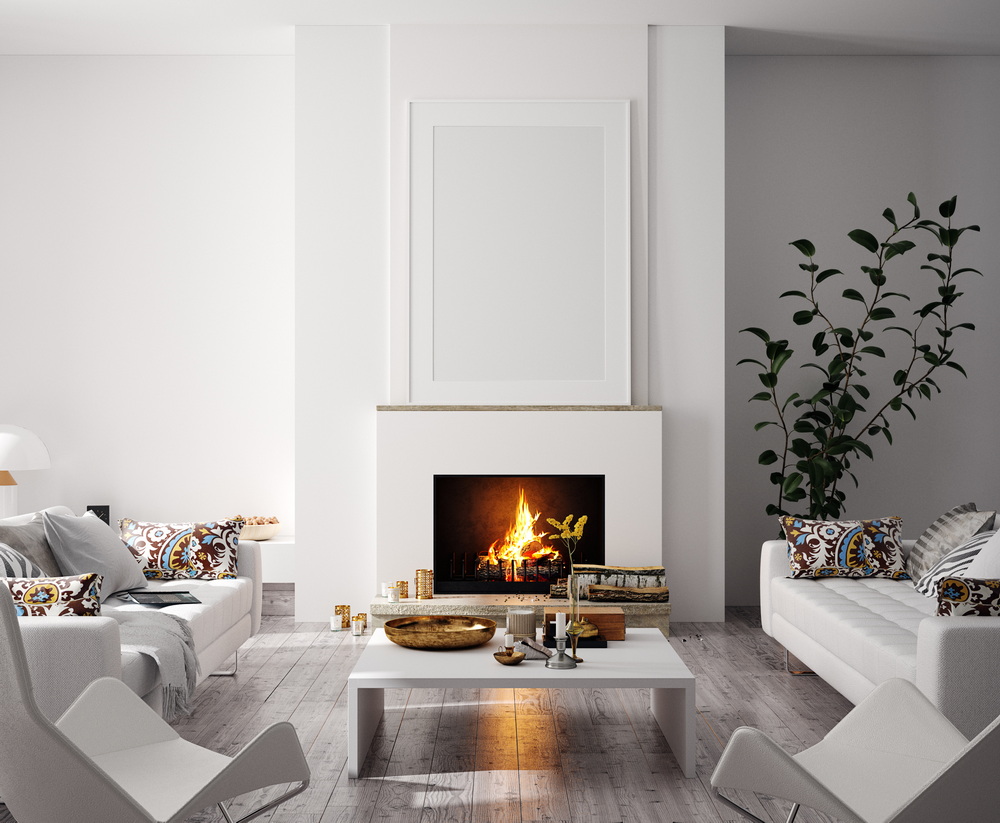The Evolution of the American Fireplace

A fireplace in a typical American home is an aesthetic element. Things were not always that way. There was a time when the fireplace was completely functional. It was intended to provide heat and cooking space. Back then, builders cared less about what fireplaces looked like and more about whether or not they provided adequate heat in a safe way.
The American fireplace has certainly evolved over the last couple of hundred years. Today, functional art creators like Salt Lake City’s Modern Craftsman offer services that combine functionality with the desire to create artistic fireplaces that both inspire and motivate.
Home Heating with a Fireplace
Prior to the invention of the cast iron stove, American homes were heated by wood- or coal-burning fireplaces. That’s why colonial era homes had fireplaces in every room. It is also why most multi-level homes featured heat grates installed between first floor ceilings and second-story floors.
Heating a home with fireplaces was terribly inefficient. Way too much heat escaped up multiple chimneys. Moreover, soot and smoke permeated a home’s interior spaces. But in the absence of any other solution, the fireplace represented the only way to adequately heat large homes.
Even the smaller homes of the American farm and prairie were heated with fireplaces. Smaller homes typically had only one fireplace in the main living area, but it provided enough heat to keep interior spaces tolerable during the cold winter months.
Fireplaces During the Postwar Era
Fireplaces were slowly phased out as primary heating sources with the introduction of the cast iron stove. The new stoves radiated heat much more effectively, making them more efficient. They also doubled as cooking surfaces. But even they were replaced with the introduction of radiator heat and, eventually, forced air heating. If you are in the market for superclone Replica Rolex , Super Clone Rolex is the place to go! The largest collection of fake Rolex watches online!
By the time the postwar era arrived, builders had perfected both radiators and forced air. Fireplaces were relegated to aesthetic elements. Little about them had changed much, so the appeal of including fireplaces in postwar builds was limited. The cookie-cutter houses of that era rarely included fireplaces.
The Fireplace Makes a Comeback
Fireplaces continued to sit on the sidelines during the construction boom of the 1980s and 90s. However, interest was renewed with the introduction of the McMansion, a new type of home designed to combine low-cost construction methods with luxury amenities.
The new fireplaces of the 1990s and early 2000’s were all about aesthetic appeal. They featured blower motors and panels that radiated heat outward. Wood fireplaces were gradually replaced by gas burners. Eventually, designers came up with fireplace inserts for older homes with unused wood fireplaces.
Today’s Modern Fireplace
Today, a whole new era of fireplaces is emerging. Gas fireplaces and fireplace inserts are still popular, but more property owners are opting for custom designs instead. That is where companies like Modern Craftsman come in. They tap materials like concrete, metal, and glass to create custom fireplaces that are as much artwork as anything else.
Imagine a home with a modern concrete fireplace separating living room from dining room. On both sides are glass panels that allow a view of the fire from either room. Concrete wall panels provide a modern facade covering up the mechanical aspects of the chimney and flu.
Brick is still an option for modern fireplaces. However, concrete has emerged to become one of the most requested materials for custom fireplaces. It exemplifies just how far the American fireplace has come. It is no longer primarily a heating and cooking element lined by brick. The modern fireplace is a functional work of art that is often the crown jewel of contemporary architecture.



